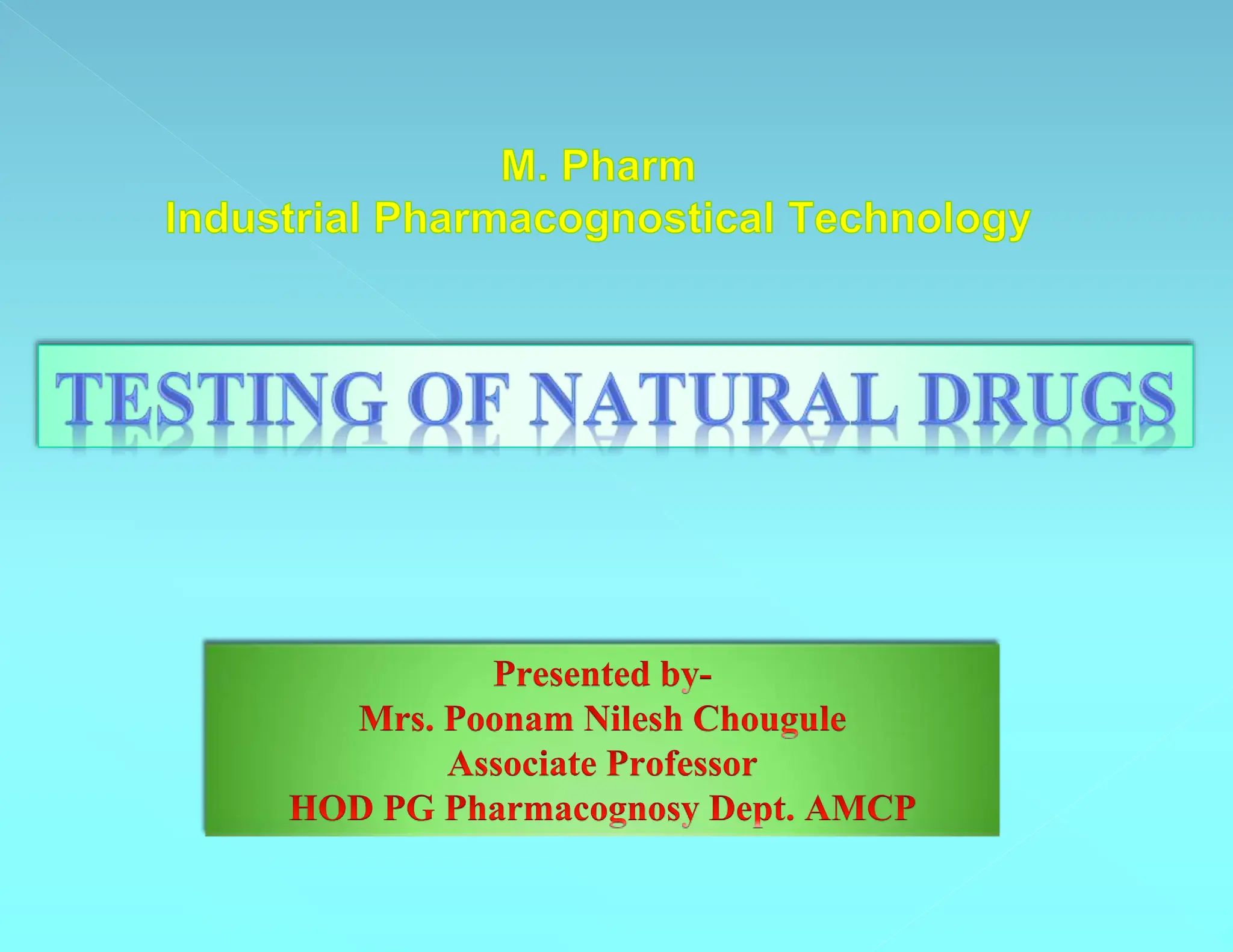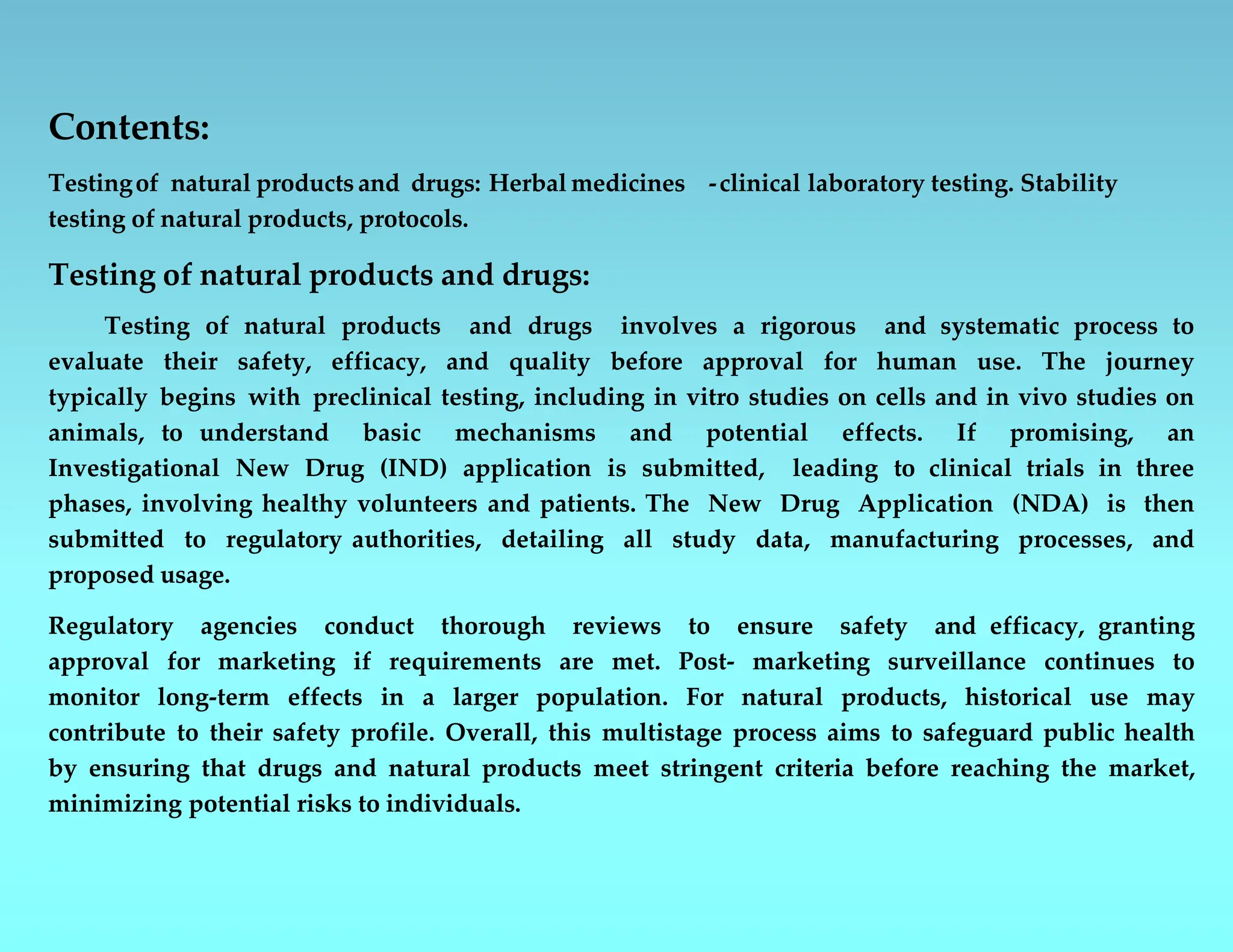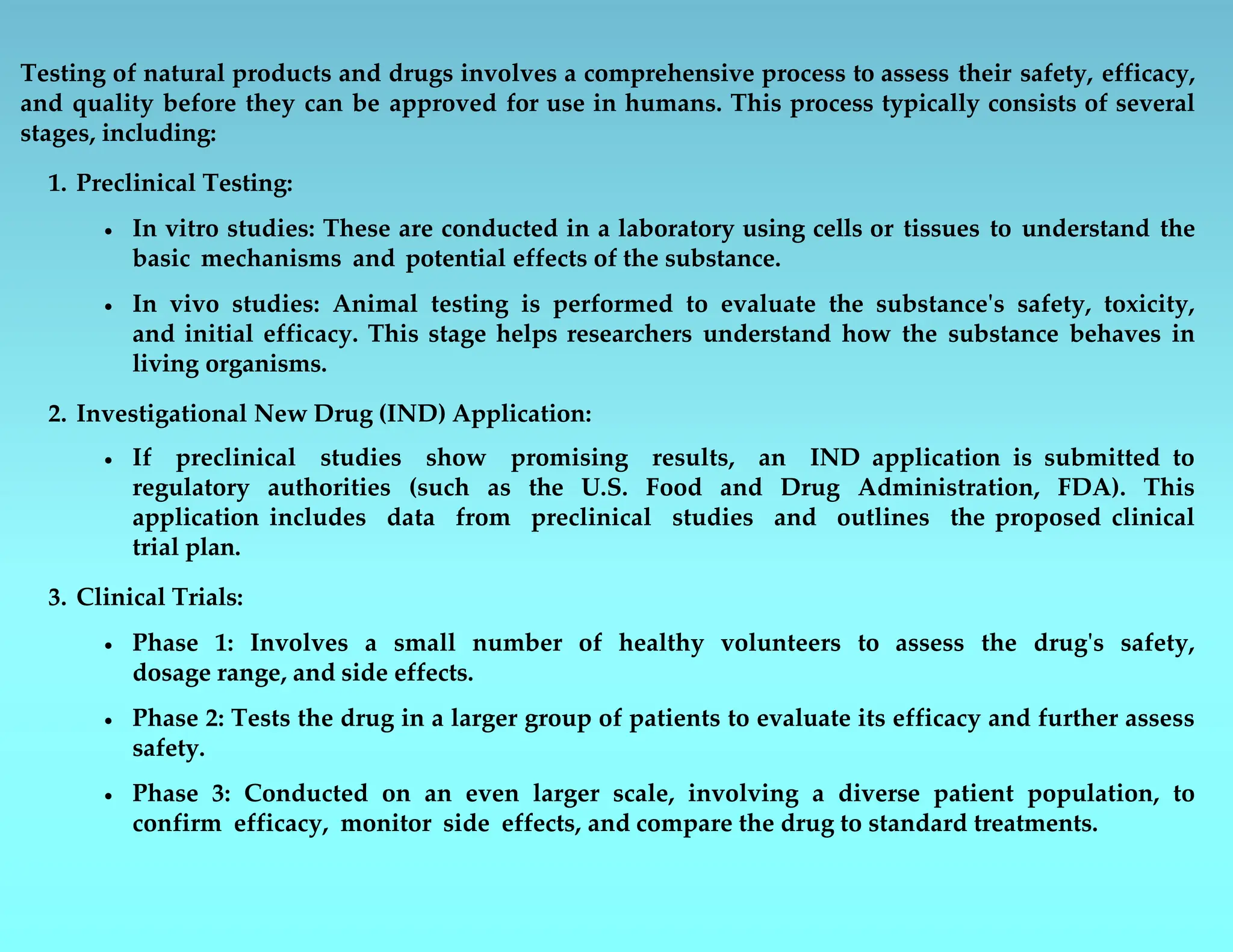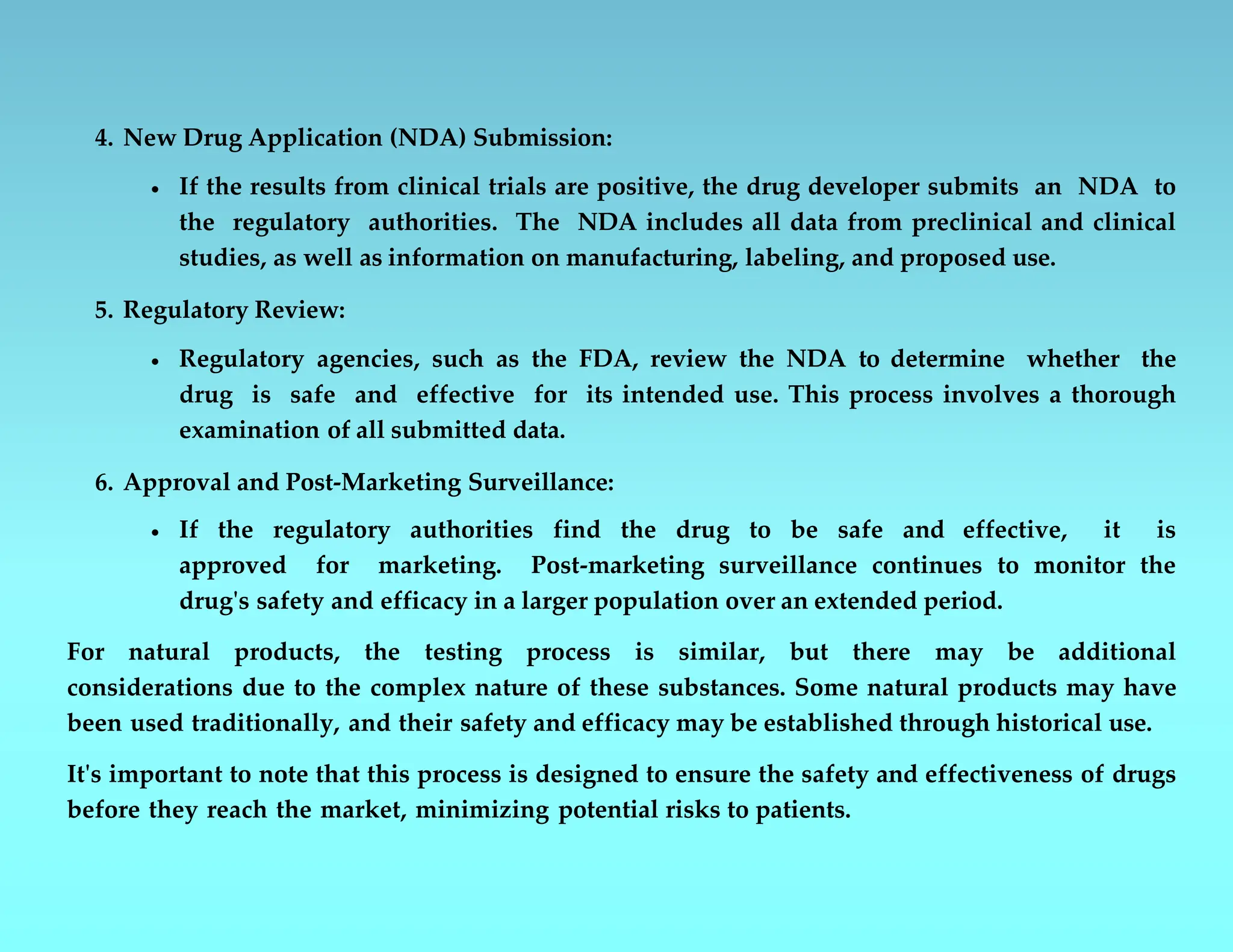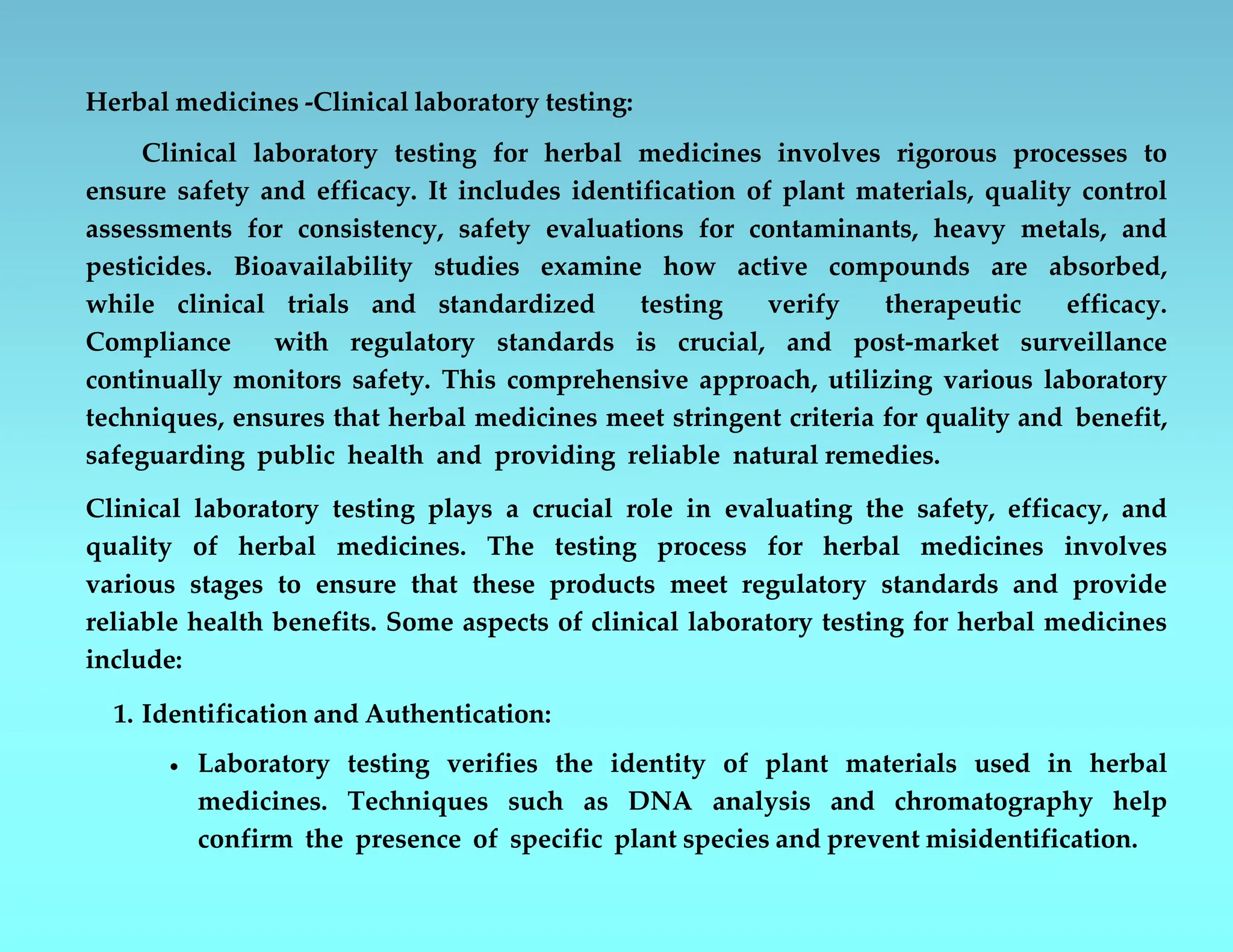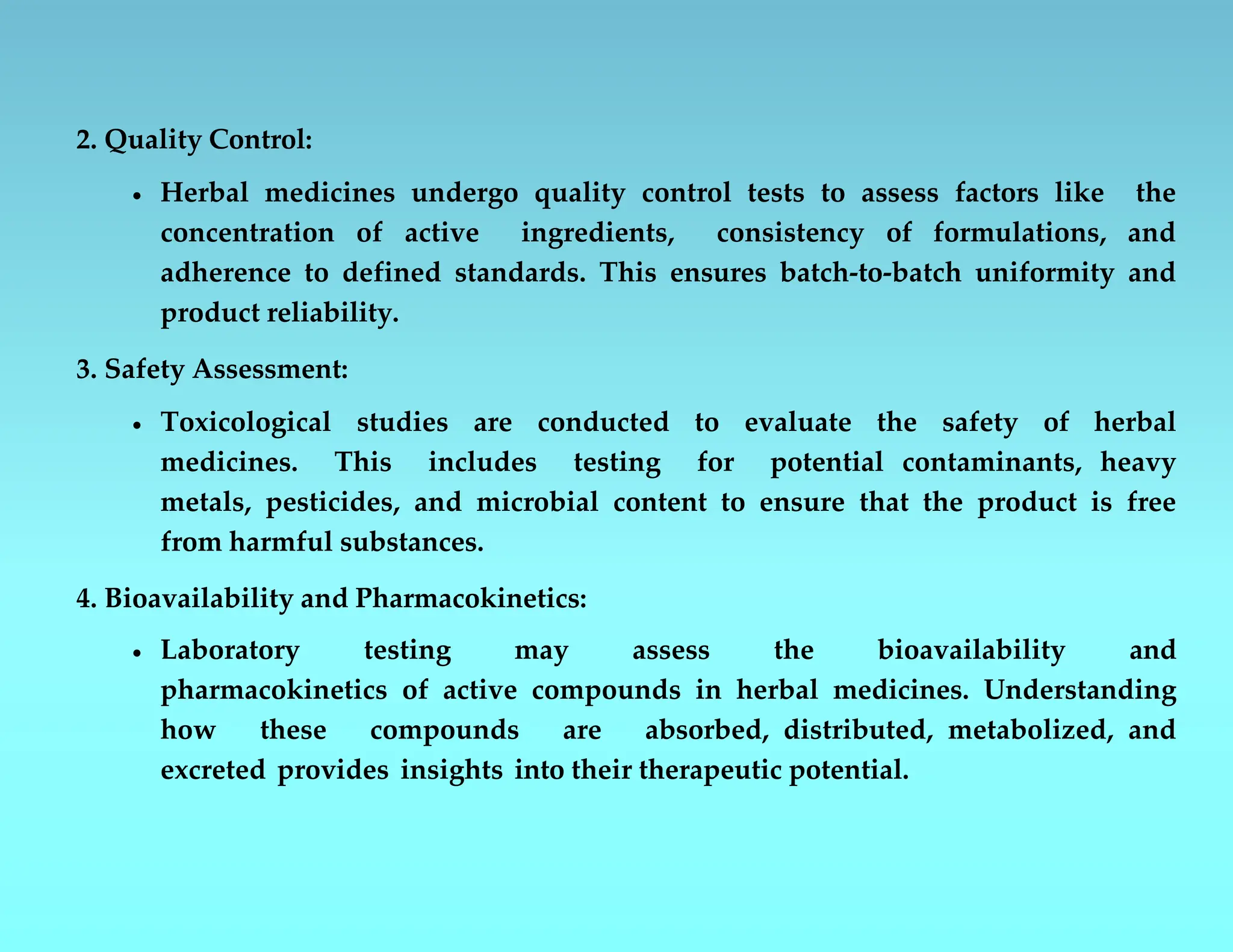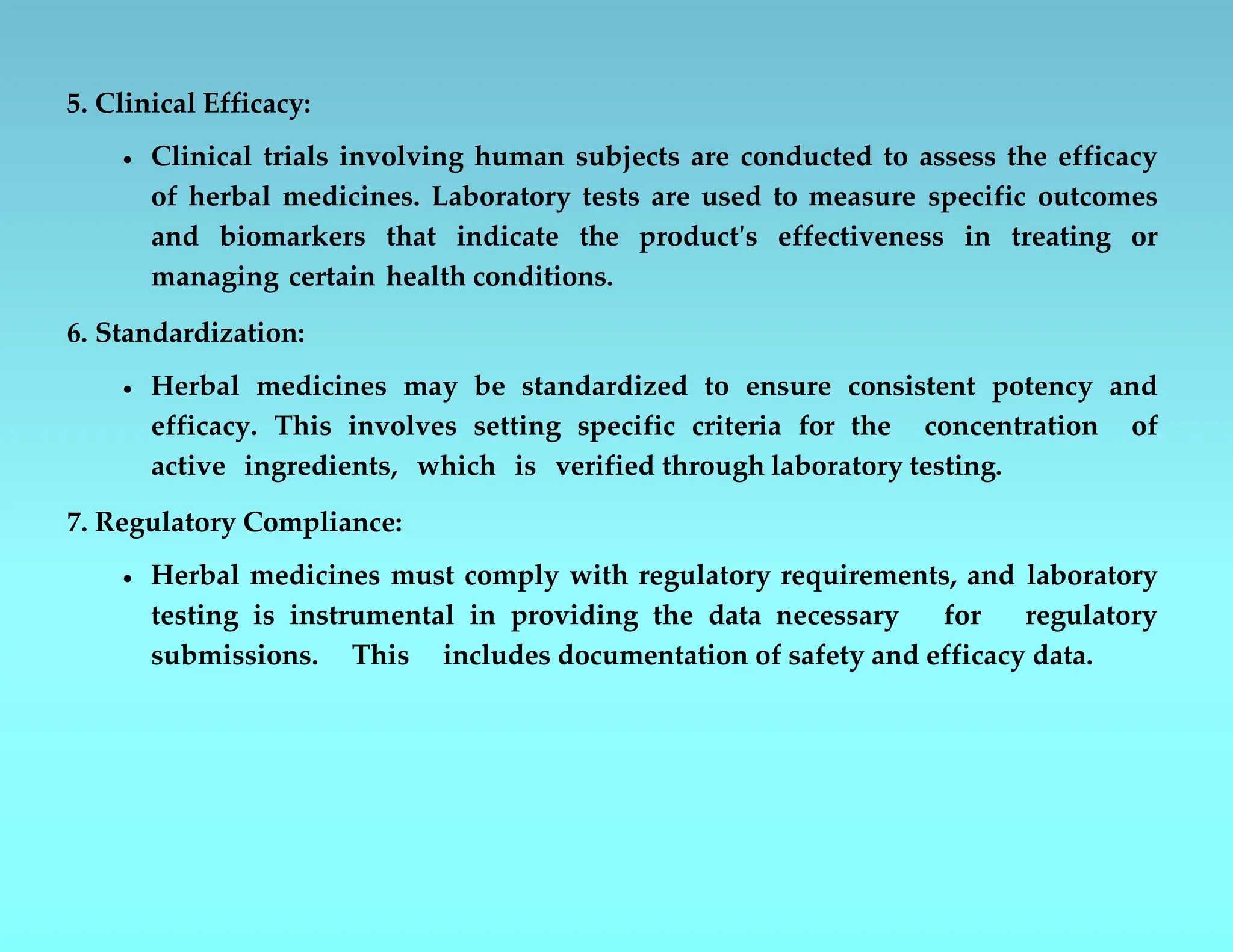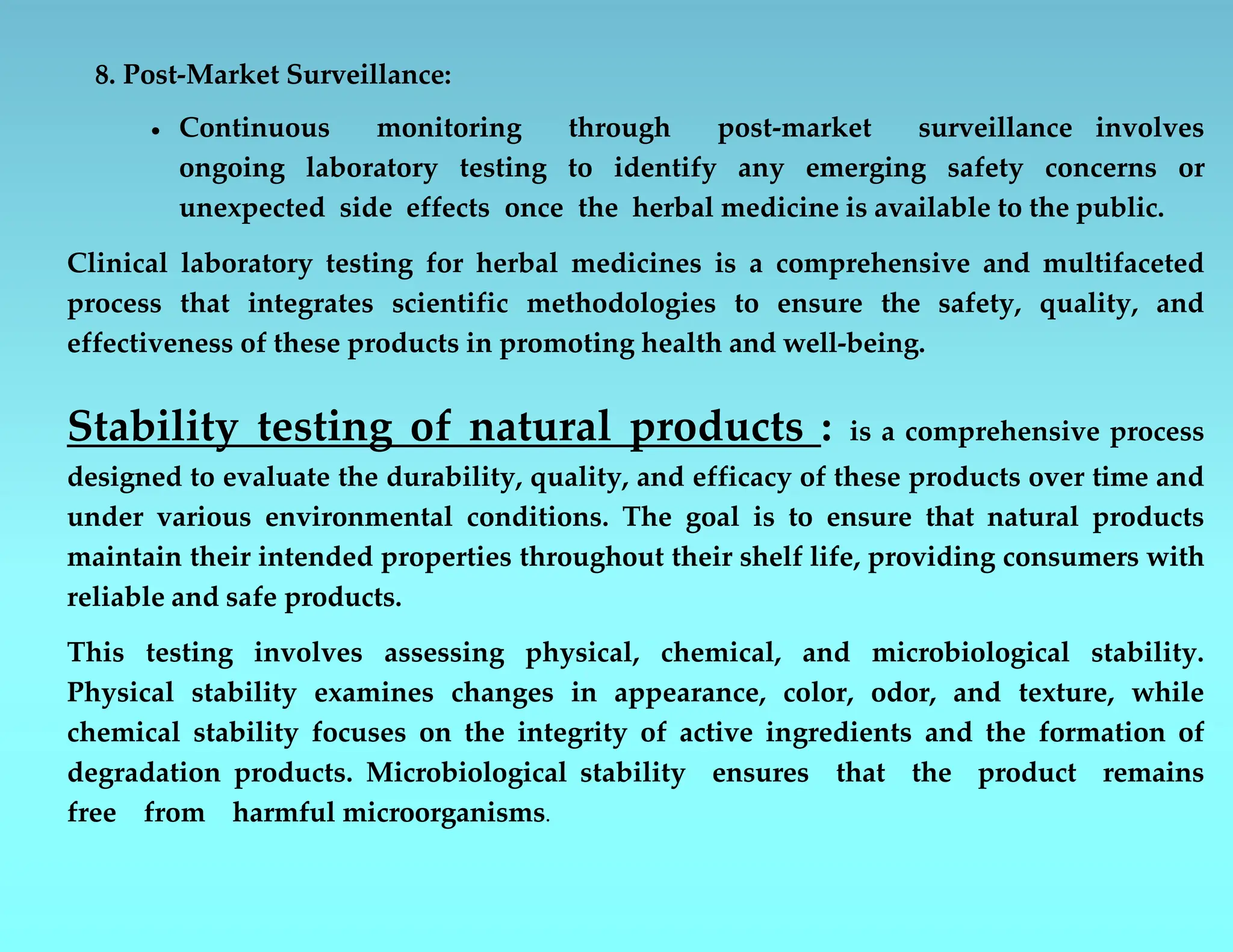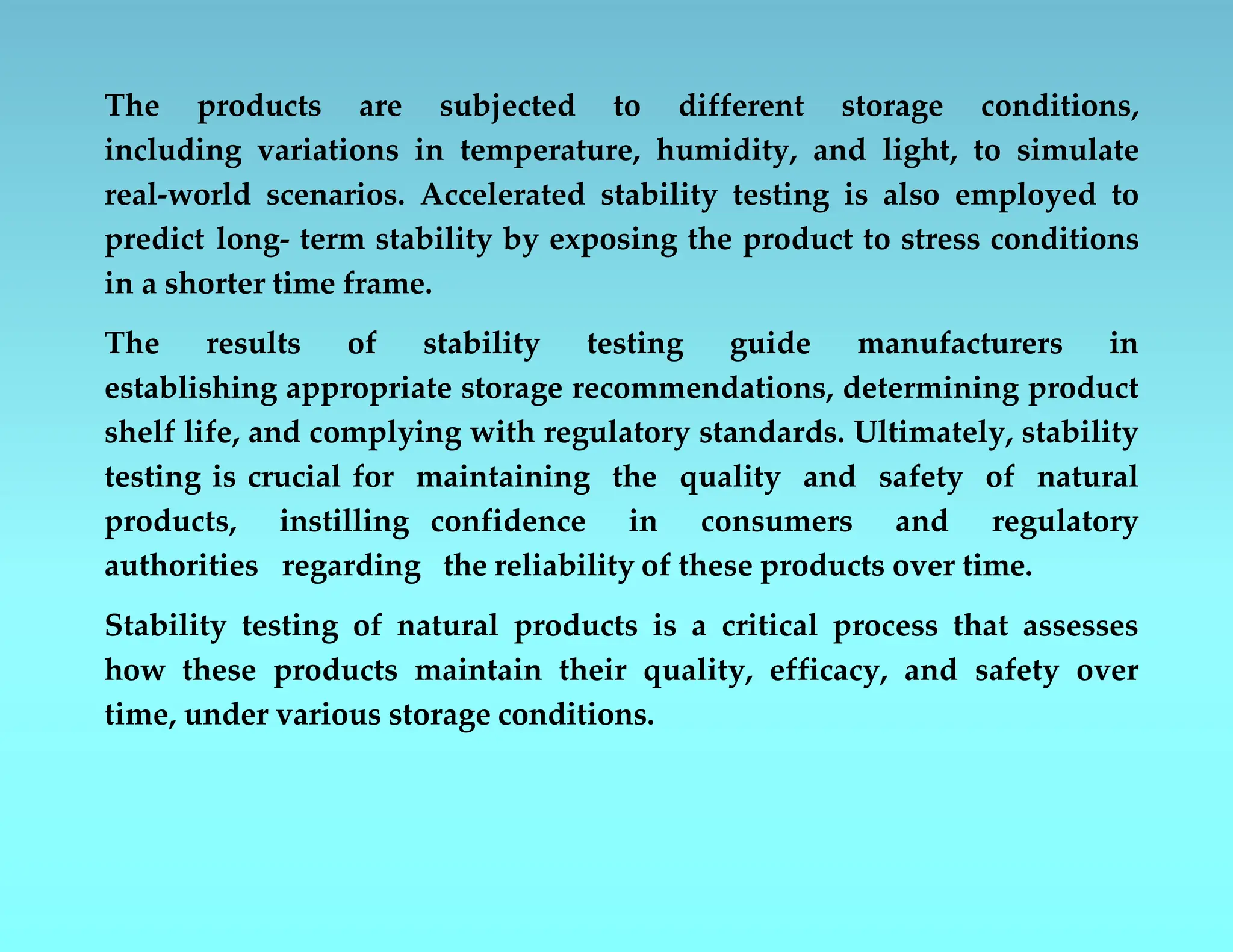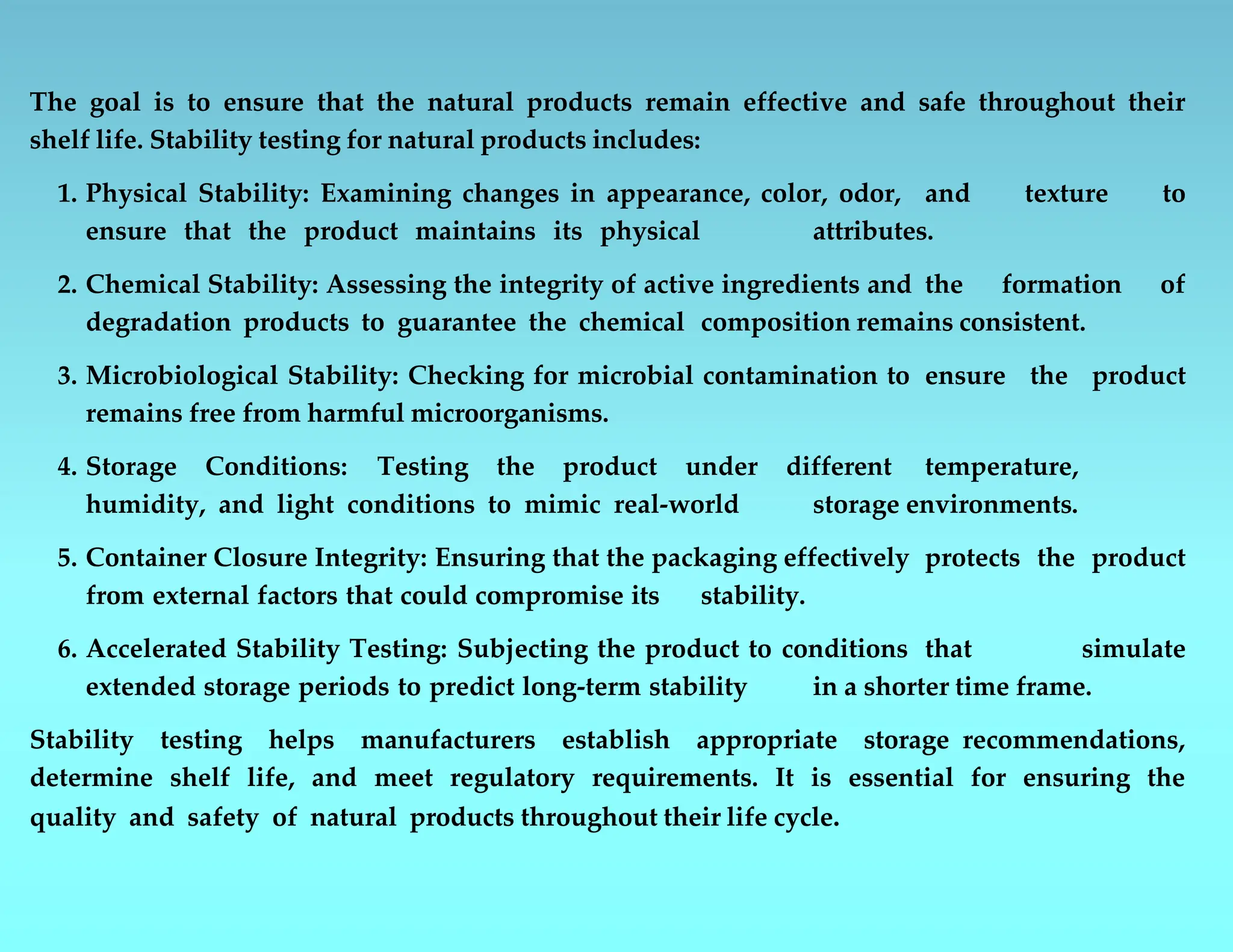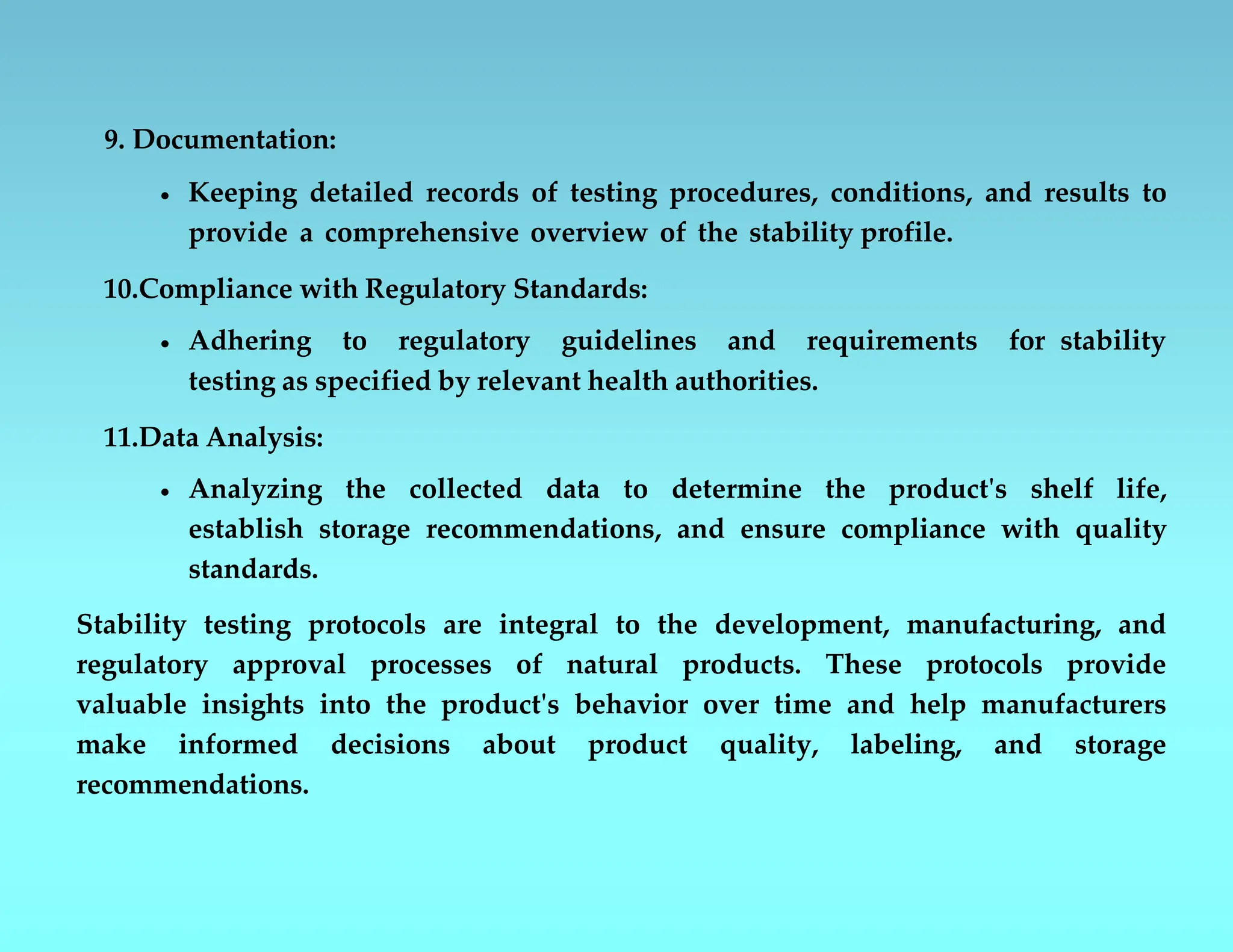The document details the rigorous testing process for natural products and drugs, highlighting the stages from preclinical testing to regulatory approval and post-marketing surveillance. It emphasizes the importance of clinical laboratory testing for herbal medicines, covering quality control, safety assessments, and efficacy evaluations. Additionally, it outlines stability testing protocols that ensure the quality, efficacy, and safety of natural products throughout their shelf life.
